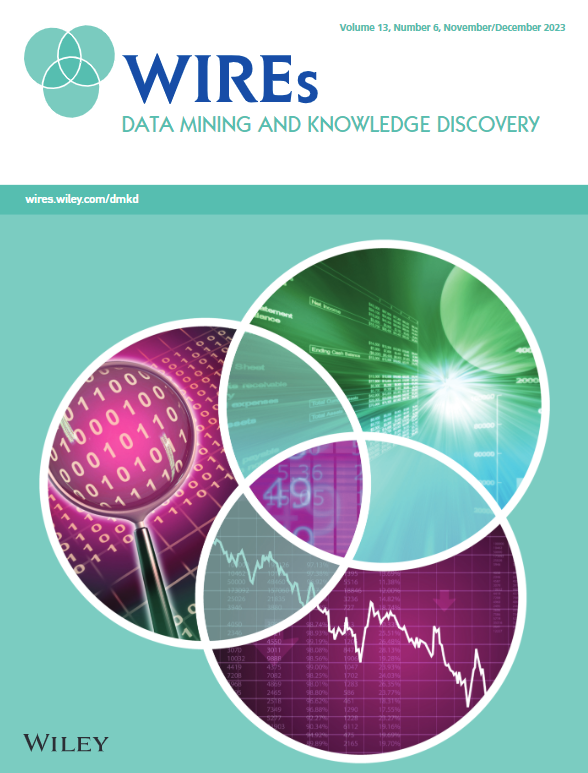A survey of biodiversity informatics: Concepts, practices, and challenges
IF 11.7
2区 计算机科学
Q1 COMPUTER SCIENCE, ARTIFICIAL INTELLIGENCE
Wiley Interdisciplinary Reviews-Data Mining and Knowledge Discovery
Pub Date : 2020-11-02
DOI:10.1002/widm.1394
引用次数: 24
Abstract
The unprecedented size of the human population, along with its associated economic activities, has an ever‐increasing impact on global environments. Across the world, countries are concerned about the growing resource consumption and the capacity of ecosystems to provide resources. To effectively conserve biodiversity, it is essential to make indicators and knowledge openly available to decision‐makers in ways that they can effectively use them. The development and deployment of tools and techniques to generate these indicators require having access to trustworthy data from biological collections, field surveys and automated sensors, molecular data, and historic academic literature. The transformation of these raw data into synthesized information that is fit for use requires going through many refinement steps. The methodologies and techniques applied to manage and analyze these data constitute an area usually called biodiversity informatics. Biodiversity data follow a life cycle consisting of planning, collection, certification, description, preservation, discovery, integration, and analysis. Researchers, whether producers or consumers of biodiversity data, will likely perform activities related to at least one of these steps. This article explores each stage of the life cycle of biodiversity data, discussing its methodologies, tools, and challenges.生物多样性信息学综述:概念、实践和挑战
前所未有的人口规模,以及与之相关的经济活动,对全球环境的影响越来越大。在世界范围内,各国都对不断增长的资源消耗和生态系统提供资源的能力感到担忧。为了有效地保护生物多样性,必须向决策者公开提供指标和知识,使他们能够有效地利用这些指标和知识。开发和部署生成这些指标的工具和技术需要获得来自生物收集、实地调查和自动化传感器、分子数据和历史学术文献的可靠数据。将这些原始数据转换为适合使用的合成信息需要经过许多细化步骤。用于管理和分析这些数据的方法和技术构成了一个通常称为生物多样性信息学的领域。生物多样性数据遵循规划、收集、认证、描述、保存、发现、整合和分析的生命周期。研究人员,无论是生物多样性数据的生产者还是消费者,都可能进行与这些步骤中的至少一个相关的活动。本文探讨了生物多样性数据生命周期的每个阶段,讨论了其方法、工具和挑战。
本文章由计算机程序翻译,如有差异,请以英文原文为准。
求助全文
约1分钟内获得全文
求助全文
来源期刊

Wiley Interdisciplinary Reviews-Data Mining and Knowledge Discovery
COMPUTER SCIENCE, ARTIFICIAL INTELLIGENCE-COMPUTER SCIENCE, THEORY & METHODS
CiteScore
22.70
自引率
2.60%
发文量
39
审稿时长
>12 weeks
期刊介绍:
The goals of Wiley Interdisciplinary Reviews-Data Mining and Knowledge Discovery (WIREs DMKD) are multifaceted. Firstly, the journal aims to provide a comprehensive overview of the current state of data mining and knowledge discovery by featuring ongoing reviews authored by leading researchers. Secondly, it seeks to highlight the interdisciplinary nature of the field by presenting articles from diverse perspectives, covering various application areas such as technology, business, healthcare, education, government, society, and culture. Thirdly, WIREs DMKD endeavors to keep pace with the rapid advancements in data mining and knowledge discovery through regular content updates. Lastly, the journal strives to promote active engagement in the field by presenting its accomplishments and challenges in an accessible manner to a broad audience. The content of WIREs DMKD is intended to benefit upper-level undergraduate and postgraduate students, teaching and research professors in academic programs, as well as scientists and research managers in industry.
 求助内容:
求助内容: 应助结果提醒方式:
应助结果提醒方式:


